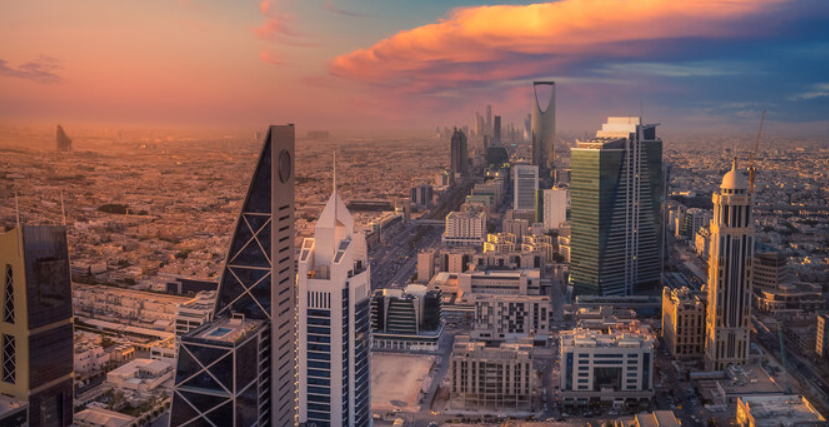
02 Oct 2024
RIYADH: Saudi Arabia’s Ministry of Finance has released its pre-budget statement for fiscal year 2025, projecting total revenues to reach approximately SR1.18 trillion ($315.73 billion), marking a 4 percent decrease from previous forecasts.
These estimates are based on a baseline scenario positioned between low and high and developed to address the challenges and geopolitical risks impacting the global economy.
The ministry emphasized that this strategy allows the government to maintain a flexible fiscal framework.
Preliminary estimates for total expenditures are set at SR1.28 trillion, resulting in a projected budget deficit of SR101 billion, which is 38 percent higher than the previous estimates.
This deficit, equivalent to 2.3 percent of gross domestic product, is considered expected and is anticipated to persist over the medium term due to ongoing expansionary spending policies.
Commenting on the outlook, Finance Minister Mohammed Al-Jaadan said: “The pre-budget statement for the fiscal year 2025 confirms that Saudi Arabia’s government will continue to focus its spending on essential services for citizens and residents, as well as on the execution of strategic projects to enhance economic growth and achieve sustainable development.”
The ministry also released revised estimates for FY 2024, indicating revenues of SR1.24 trillion, a 6 percent increase from previous forecasts.
Expenditures are projected to reach SR1.35 trillion, reflecting an 8 percent rise, resulting in a deficit of SR118 billion primarily due to increased spending.
The FY 2025 budget aligns with Saudi Vision 2030 by advancing fiscal and economic reforms. The government aims to balance its strong fiscal position, financial reserves, and low public debt while improving spending efficiency and prioritization.
Key focuses include accelerating projects that promote sustainable economic growth and adjusting others to stabilize and diversify the economy. The budget prioritizes enhancements in social services, social protection, and regulatory reforms.
Additionally, it emphasizes transformative spending, utilizing sovereign funds, and empowering the private and non-profit sectors. Significant initiatives under Vision 2030 are aimed at developing promising sectors, attracting investment, stimulating local industries, and expanding non-oil exports.
Noteworthy progress has been made in boosting tourism and entertainment, bolstered by the Public Investment Fund and national development funds, which are driving robust and sustainable growth in non-oil sectors and positioning the Kingdom for long-term economic resilience.
To support stability and balance in oil markets, Saudi Arabia and OPEC+ have implemented a reduction in oil supplies, bringing the Kingdom’s average production from the beginning of FY2024 until the end of July to 8.96 million barrels per day.
According to the ministry, OPEC+ countries have established a new production agreement for FY 2025, effective from January to December.
Several member nations, including Saudi Arabia, Russia, and the UAE, have agreed to extend voluntary production cuts. This includes a reduction of 1.65 million bpd, initially announced in April 2023 and now extended until December 2025, as well as an additional cut of 2.2 million bpd extended until November 2024.
The ministry noted that these reduced quantities will be gradually restored on a monthly basis until November 2025, with adjustments made according to market conditions to ensure stability.
The real GDP is expected to grow by 0.8 percent in 2024, supported by a projected growth of approximately 3.7 percent in non-oil activities, according to the official data.
Private consumption increased by 2.4 percent in the first half of 2024, fueled by growth in wholesale and retail trade, as well as restaurants and hotels. The facilitation of visit visa procedures and the expansion of eligible categories have also boosted visitor numbers to entertainment, cultural events, and tourist destinations.
The average consumer price index rose by 1.6 percent from the beginning of 2024 to August, compared to the same period last year. Preliminary forecasts suggest the consumer price index will reach approximately 1.7 percent for the entire year.
The Kingdom has maintained acceptable inflation levels relative to global standards, owing to ongoing improvements in economic conditions and proactive government measures to control rising prices, including price ceilings for gasoline and enhancements in food supply.
Financing plans
Saudi Arabia’s robust fiscal position, characterized by strong financial reserves and manageable public debt, enables the Kingdom to effectively navigate potential economic shocks and secure financing across the short, medium, and long term.
The Ministry of Finance, through the National Debt Management Center, develops an annual borrowing plan aimed at ensuring debt sustainability, diversifying financing sources, and accessing global markets. This strategy aligns with Saudi Vision 2030, promoting growth in the financial sector and deepening the domestic debt market.
The Kingdom is expanding its financing channels through bonds, sukuk, and loans, while also working to enhance its sovereign credit rating.
According to the ministry, controlled debt growth supports expansionary spending necessary to achieve Vision 2030 objectives, ensuring fiscal sustainability and resilience against future challenges.
Fitch Ratings reaffirmed Saudi Arabia’s A+ rating with a stable outlook, while Moody’s maintained its A1 rating with a positive outlook. Additionally, S&P Global Ratings upheld its A rating for the Kingdom, upgrading its outlook from stable to positive.
These ratings reflect the country’s ongoing economic transformation, driven by structural reforms and fiscal policies that prioritize sustainability and efficient financial planning.